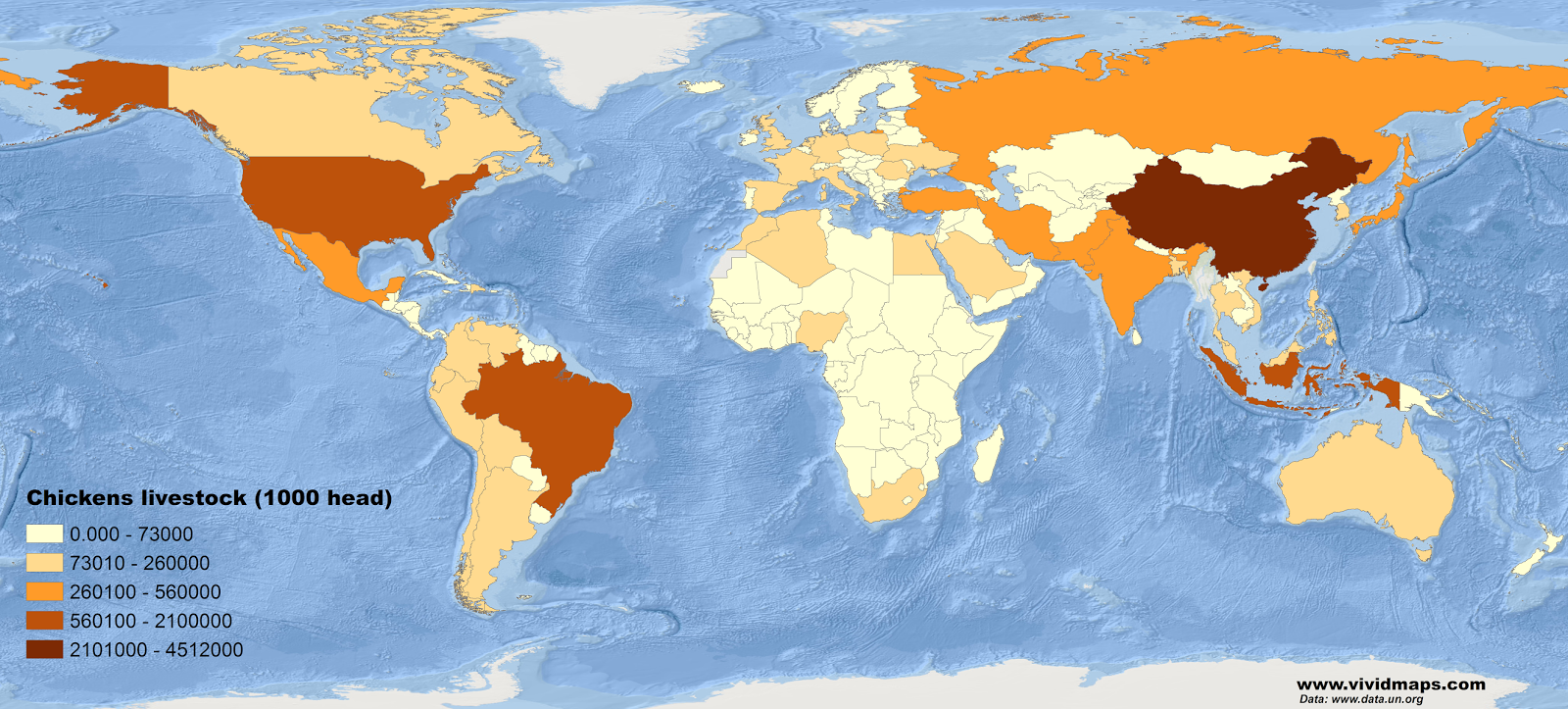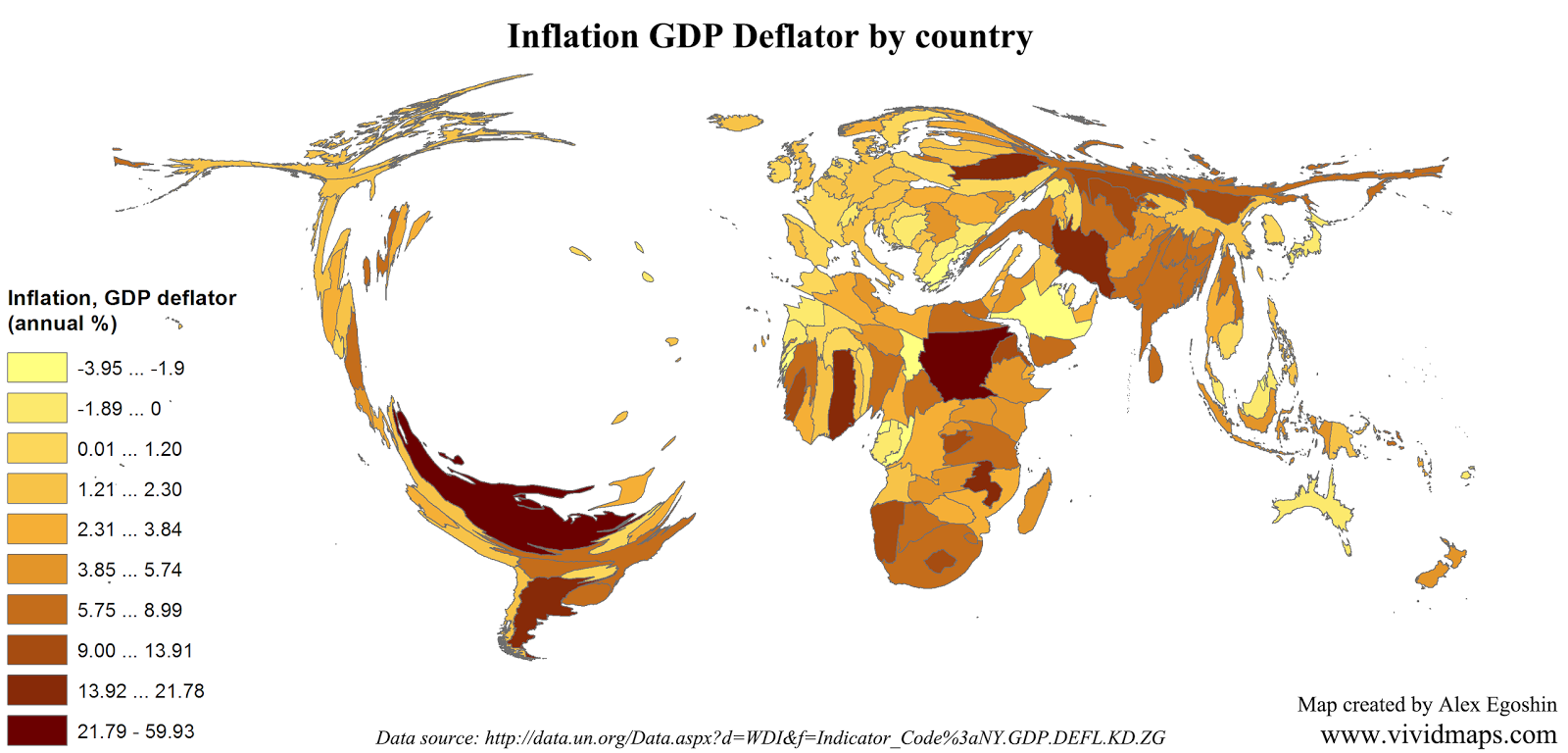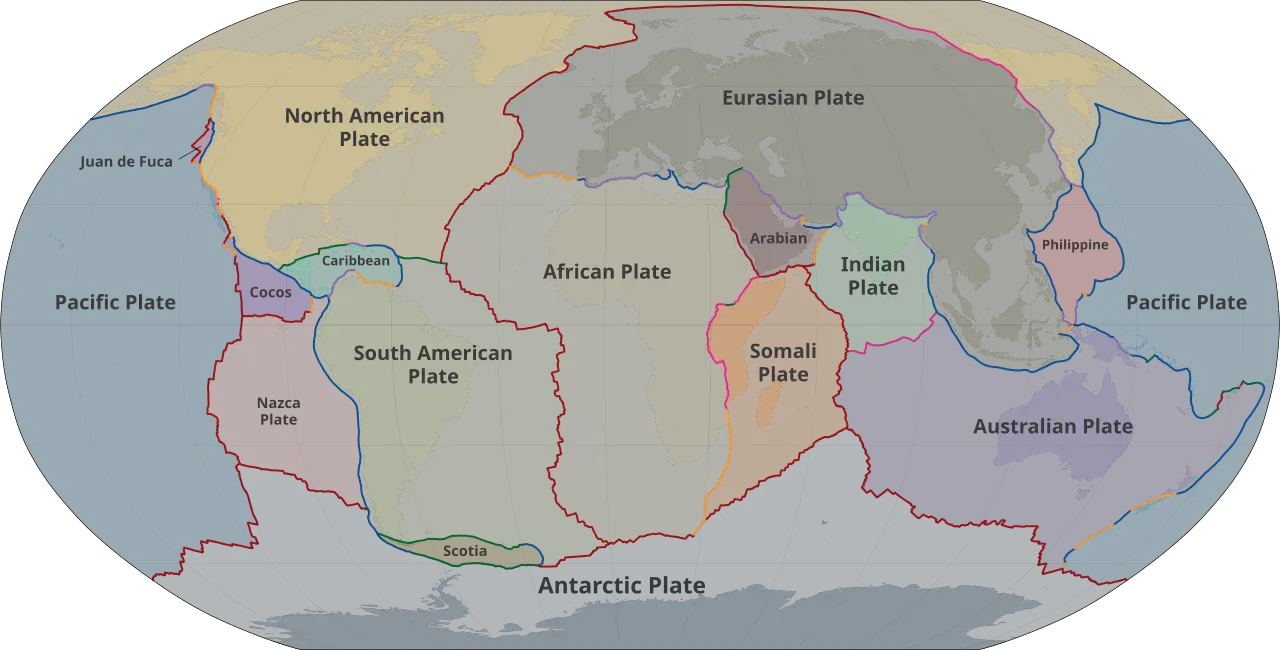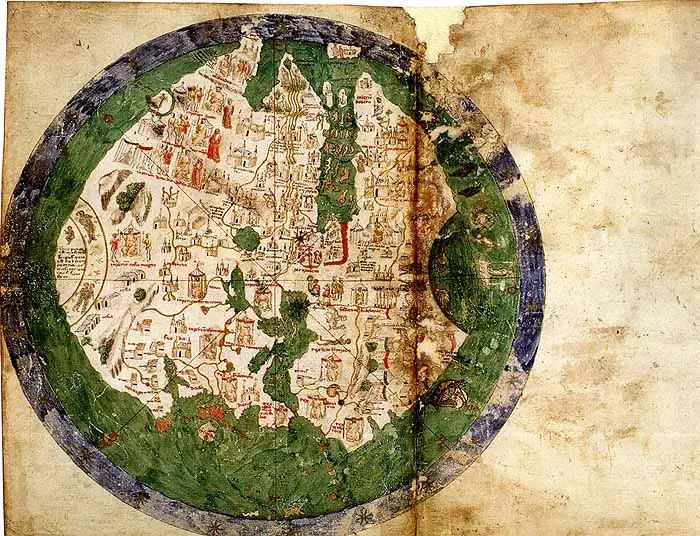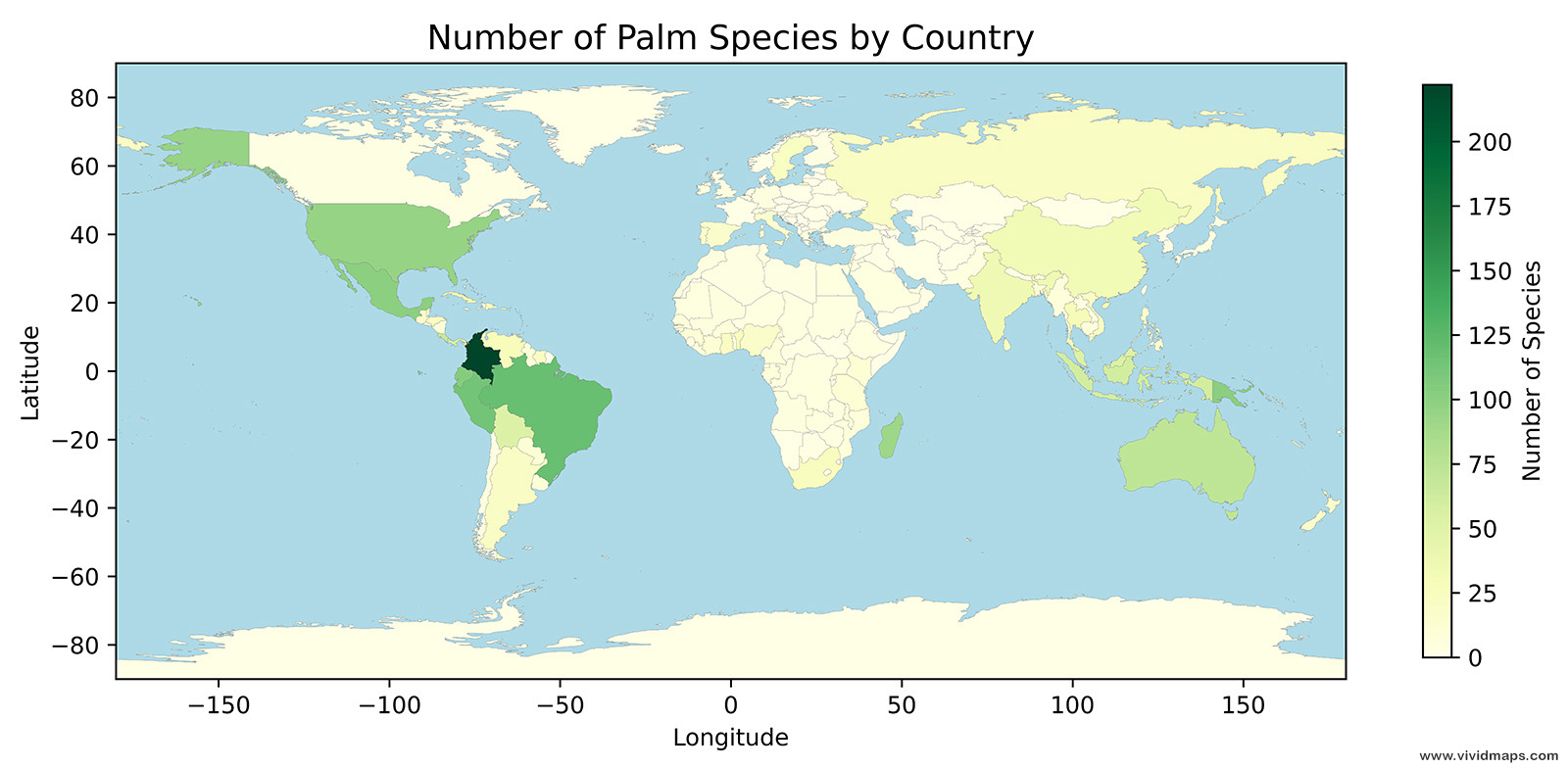Mountain Ranges and Systems of the World Mapped
A mountain range is a series of mountains arranged in a line and connected by high ground. Mountain ranges are formed by a variety of geological processes, but most of the substantial ones on our planet are the result of plate tectonics. Mountain ranges that have arisen from the same cause and are similar in form, structure, and alignment make up a mountain system.
Table of Contents
Reddit user BerryBlue_BlueBerry created the world map of the 200 largest mountain ranges, sorted by peak elevation using data from Peakbagger.com.

The largest mountain ranges in the world, based on their extent
- The Andes: The Andes is the longest mountain range in the world, stretching approximately 7,000 kilometers (4,350 miles) along the western coast of South America. It traverses seven countries, including Venezuela, Colombia, Ecuador, Peru, Bolivia, Chile, and Argentina. The Andes feature numerous peaks, including Aconcagua, the highest mountain outside of Asia.
- The Rocky Mountains: The Rocky Mountains extend over 4,800 kilometers (3,000 miles) from British Columbia in Canada to New Mexico in the United States. This mountain range is a major feature of North America, passing through several states and provinces, such as Alberta, Montana, Colorado, Wyoming, and more. The Rockies are renowned for their scenic landscapes, alpine ecosystems, and recreational opportunities.
- The Great Dividing Range: The Great Dividing Range is a mountain range that runs parallel to the eastern coast of Australia, stretching for about 3,500 kilometers (2,175 miles). It encompasses various mountain ranges, plateaus, and escarpments and forms a significant watershed dividing the drainage patterns of Australia’s eastern rivers. The Great Dividing Range is home to diverse flora and fauna.
- The Transantarctic Mountains: The Transantarctic Mountains are a major mountain system in Antarctica, extending for approximately 3,500 kilometers (2,175 miles) across the continent. These mountains divide East Antarctica and West Antarctica and feature glaciers, ice sheets, and icy peaks. They are important for scientific research and exploration in Antarctica.
- The Himalayas: The Himalayas are renowned for their majestic peaks, including Mount Everest, the highest mountain on Earth. The Himalayan mountain range stretches for about 2,400 kilometers (1,500 miles) across several countries, including India, Nepal, Bhutan, Tibet (China), and Pakistan. It is a geologically active region formed by the collision of the Indian and Eurasian tectonic plates.
The largest mountain ranges in the world by area:
- The Great Dividing Range: The Great Dividing Range is a significant mountain range in eastern Australia, stretching for about 3,500 kilometers (2,175 miles). While not as long as some other mountain ranges, it covers a vast area of approximately 2 million square kilometers (772,000 square miles), making it one of the largest by area.
- The Ural Mountains: The Ural Mountains form a natural boundary between Europe and Asia, spanning approximately 2,500 kilometers (1,550 miles) from the Arctic Ocean to the Ural River. They cover an area of around 1.85 million square kilometers (714,000 square miles) and are known for their mineral resources.
- The Arctic Cordillera: The Arctic Cordillera is the largest mountain range by area, located in the Canadian Arctic Archipelago. It covers an extensive region of approximately 1.4 million square kilometers (540,000 square miles). This mountain range consists of numerous individual mountain groups and features glaciers, ice caps, and Arctic tundra.
- Andes: The Andes cover an expansive area of about 1.3 million square kilometers (500,000 square miles) and are known for their diverse ecosystems and high peaks, including the highest peak outside of Asia, Mount Aconcagua.
- Southern Great Escarpment: The Southern Great Escarpment is a vast mountain range that stretches along the southeastern coast of Africa, from Angola to South Africa. It covers an area of approximately 900,000 square kilometers (350,000 square miles). This mountain range is characterized by steep cliffs, plateaus, and escarpments that separate the coastal plains from the inland plateau.
- Rocky Mountains: The Rocky Mountains, also known as the Rockies, extend from Canada to the United States, covering a total area of around 700,000 square kilometers (270,000 square miles). This mountain range stretches across several states in the U.S., including Montana, Wyoming, Colorado, and New Mexico, as well as parts of Canada. The Rockies are known for their rugged peaks, alpine lakes, and diverse wildlife.
Which mountain ranges are the oldest?
Determining the exact age of mountain systems can be challenging due to the complex processes of mountain building and erosion over millions of years. However, there are several mountain systems that are considered among the oldest on Earth.
- The Aravalli Range: Situated in western India, the Aravalli Range is considered one of the oldest fold mountain systems in the world. It formed around 2 billion years ago, during the Proterozoic Era. The Aravalli Range extends across the Indian states of Rajasthan, Haryana, and Gujarat and has undergone significant erosion over time.
- The Appalachian Mountains: Located in eastern North America, the Appalachian Mountains are one of the oldest mountain ranges on the planet. They formed during the Paleozoic Era, primarily in the late Ordovician to early Permian periods, approximately 480 to 300 million years ago. Today, the Appalachian Mountains span from Newfoundland in Canada to Alabama in the United States.
- The Caledonian Mountains: The Caledonian Mountains were formed during the Caledonian orogeny, a mountain-building event that took place around 430 to 390 million years ago. This mountain-building event affected areas in what is now Scandinavia, Greenland, Scotland, and parts of North America. Although the Caledonian Mountains have undergone extensive erosion over millions of years, remnants can still be found in Norway, Scotland, and Greenland.
- The Urals: Situated in Russia, the Ural Mountains are another ancient mountain range. They are believed to have originated around 300 to 250 million years ago, during the late Paleozoic Era. The Urals extend from the Arctic Ocean in the north to Kazakhstan in the south, serving as a natural boundary between Europe and Asia.
Which mountain ranges are the youngest?
Identifying the youngest mountain ranges can be challenging as the formation of mountains is a complex and gradual process that can take millions of years. However, there are some relatively young mountain ranges on Earth:
- The Himalayas: While the Himalayas are also one of the oldest mountain ranges, their ongoing uplift and formation make them noteworthy as one of the youngest active mountain systems. The collision between the Indian and Eurasian tectonic plates began around 50 million years ago and is still ongoing. The Himalayas continue to rise at a rate of a few millimeters to several centimeters per year, resulting in ongoing mountain building.
- The Southern Alps: Located in New Zealand, the Southern Alps are relatively young in geological terms. They began forming approximately 5 million years ago due to the collision of the Pacific and Australian tectonic plates. The Southern Alps contain towering peaks, such as Aoraki/Mount Cook, which stands at 3,724 meters (12,218 feet).
- The Andes: While the Andes are one of the oldest mountain ranges on Earth, there are sections of the range that have experienced more recent uplift. The Central Andes, which include areas of Peru, Bolivia, and northern Chile, have experienced significant uplift and mountain building over the past 10 to 15 million years. This period of uplift is relatively young compared to the overall age of the Andes.
- The Zagros Mountains: Located in Iran and extending into Iraq, the Zagros Mountains are considered relatively young. They began forming around 10 million years ago as a result of the collision between the Arabian and Eurasian tectonic plates. The Zagros Mountains are still actively rising, with some areas experiencing ongoing seismic activity.
The largest mountain systems in the world
Mountain ranges often form large mountain systems that are easily visible from space. A list of the largest mountain systems on our planet is provided below.
- The Himalayas: Situated in South Asia, the Himalayas stretch across several countries, including India, Nepal, Bhutan, Tibet (China), and Pakistan. This majestic mountain range is renowned for its highest peak, Mount Everest, standing at 8,848 meters (29,029 feet) above sea level. The Himalayas are not only geologically significant but also culturally and ecologically diverse.
- The Andes: Spanning the western coast of South America, the Andes is the longest mountain range in the world, extending over 7,000 kilometers (4,350 miles). It passes through seven countries, including Venezuela, Colombia, Ecuador, Peru, Bolivia, Chile, and Argentina. The Andes showcase numerous prominent peaks, such as Aconcagua, the highest mountain outside of Asia, reaching 6,960 meters (22,837 feet) in Argentina.
- The Rocky Mountains: Situated in western North America, the Rocky Mountains extend from Canada down to the United States. This vast mountain system covers a distance of about 4,800 kilometers (3,000 miles), crossing several U.S. states and Canadian provinces. The Rockies encompass stunning landscapes and national parks, including Yellowstone and the Grand Canyon.
- The Alps: Nestled in Europe, the Alps span several countries, including France, Switzerland, Italy, Austria, Germany, and Slovenia. While not as long as some other mountain ranges, the Alps are renowned for their beauty and have significant cultural and economic importance. The highest peak in the Alps is Mont Blanc, reaching an elevation of 4,810 meters (15,781 feet) in the border region of France and Italy.
- The Atlas Mountains: Located in North Africa, the Atlas Mountains stretch across Morocco, Algeria, and Tunisia. This mountain range serves as a natural barrier between the Sahara Desert and the Mediterranean Sea. The highest peak in the Atlas Mountains is Jebel Toubkal, standing at 4,167 meters (13,671 feet) in Morocco.
Mountain systems have a significant influence on life on our planet. They support diverse ecosystems, act as water towers that provide freshwater to downstream areas, regulate regional and global climate patterns, and serve as habitats for unique and specialized species. Mountains also hold cultural and spiritual significance for many communities and attract tourists and outdoor enthusiasts. Here is the list of the most significant and expansive mountain systems on our planet.


